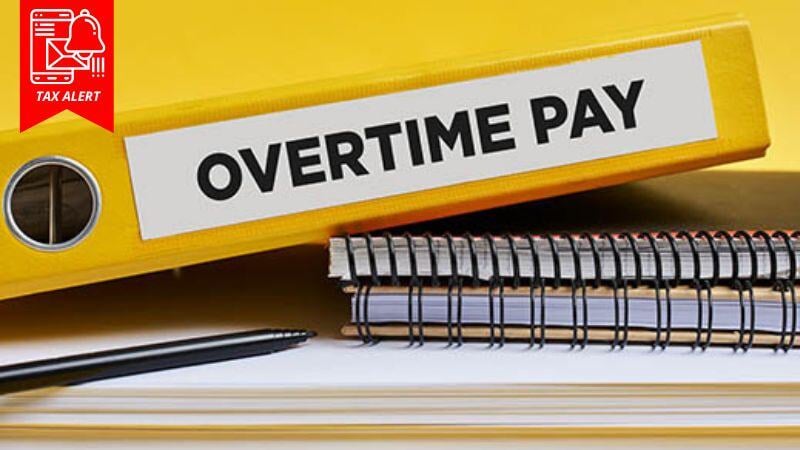Federal court rules against DOL’s “white collar” overtime rule
A federal district court judge has struck down the Biden administration’s new rule regarding the salary threshold for determining whether certain employees are exempt from federal overtime pay requirements. The first phase of the rule took effect for most employers in July 2024 and affects executive, administrative and professional (EAP) employees.With a Republican administration poised to take control of the U.S. Department of Labor (DOL), the court’s ruling may sound the death knell for the rule. Here’s what the ruling means for employers.
The rejected rule
Under the Fair Labor Standards Act (FLSA), nonexempt workers are entitled to overtime pay at 1.5 times their regular pay rate for hours worked per week that exceed 40. EAP employees are exempt from the overtime requirement if they satisfy three tests:
Salary basis test. An employee is paid a predetermined and fixed salary that isn’t subject to reduction due to variations in the quality or quantity of his or her work.
Salary level test. The salary isn’t less than a specific amount or threshold.
Duties test. An employee primarily performs executive, administrative or professional duties.
The new rule focused on the salary level test and increased the threshold in two steps. The first step occurred on July 1, 2024, when most salaried workers earning less than $844 per week or $43,888 per year became eligible for overtime (up from $684 per week or $35,568 per year). The second step was scheduled to kick in on January 1, 2025, when the salary threshold would have increased to $1,128 per week or $58,656 per year.
In addition, the rule raised the total compensation requirement for highly compensated employees (HCEs), who are subject to a more relaxed duties test than employees earning less. HCEs need only “customarily and regularly” perform at least one of the duties of an exempt EAP employee instead of primarily performing such duties.
As of July 1, 2024, this less restrictive test applied to HCEs who perform office or nonmanual work and earn total compensation (including bonuses, commissions and certain benefits) of at least $132,964 per year (up from $107,432). It would have risen to $151,164 on January 1, 2025.
The rule also established a mechanism to update the salary thresholds every three years, based on current earnings data from the most recent available four quarters of data from the U.S. Bureau of Labor Statistics. However, the DOL could temporarily delay a scheduled update when warranted by unforeseen economic or other conditions.
The court’s ruling
In June 2024, the U.S. District Court for the Eastern District of Texas temporarily blocked the rule as far as its application to the State of Texas as an employer — so on an extremely limited basis — while it considered the state’s underlying legal challenge to the rules (State of Texas v. U.S. Dep’t of Labor). Multiple business groups joined Texas and asked the court to vacate the rule entirely.
On November 15, 2024, the court did just that. It found that the new rule exceeded the DOL’s authority to define terms because the EAP exemption requires that an employee’s status turn on duties, not salary — and the new rule impermissibly made salary predominate over duties. The court also found the automatic updating mechanism exceeded the DOL’s authority.
Notably, the court cited the U.S. Supreme Court’s recent decision overturning the doctrine known as “Chevron deference.” Under the doctrine, which had been in effect for decades, courts deferred to “permissible” agency interpretations of the laws they administer. The high court’s ruling empowers courts to reject agency rules more easily.
Employer response
As a result of the court’s ruling, the salary thresholds for EAP employees and HCEs return to their earlier levels: $684 per week or $35,568 per year for the former and $107,432 for the latter. On its face, that’s good news for employers. However, many businesses have started making moves in response to the new rule. For example, employers may have reclassified some employees as nonexempt, increased salaries to retain exempt status for others or reduced salaries to offset new overtime pay. Now what?
Of course, the DOL could appeal the ruling, which could make employers reluctant to institute any immediate changes. An appeal would be heard by the conservative Fifth Circuit Court of Appeals, which has repeatedly ruled against the Biden administration.
The best predictor of what’s to come may be the treatment of a similar DOL rule issued by President Obama’s administration. A court invalidated the rule in November 2016 in a ruling that was appealed while Obama was still in office. The DOL under President Trump’s first administration withdrew the appeal and issued the revised and less expansive rule that took effect in 2019.
Regardless, bear in mind that exempt employees also must satisfy the applicable duties test, whatever the salary threshold. An employee whose salary exceeds the threshold but doesn’t primarily engage in the applicable duties isn’t exempt from the overtime requirements.
Proceed with caution
Employers that roll back changes in status or salary increases that were implemented in anticipation of the new rule may find that employees — or their attorneys — begin to question whether their duties warrant an exemption. Even if they don’t pursue litigation, rollbacks must be weighed against the impact on employee morale in a competitive job market. The best course will vary by employer, and legal advice is strongly encouraged. We’ll keep you updated on the latest news regarding the ruling.
© 2024

